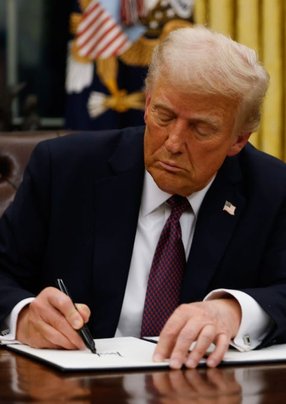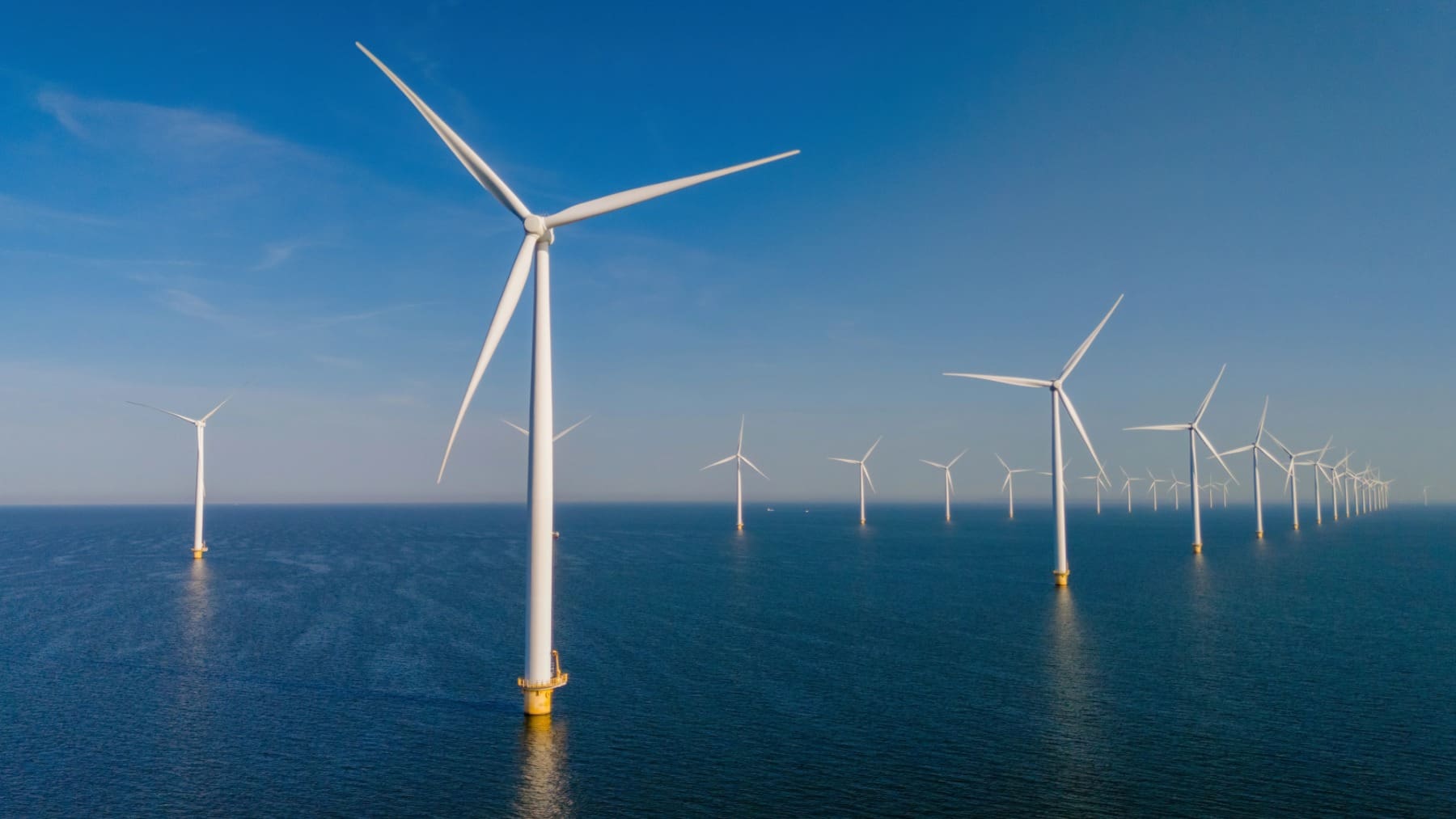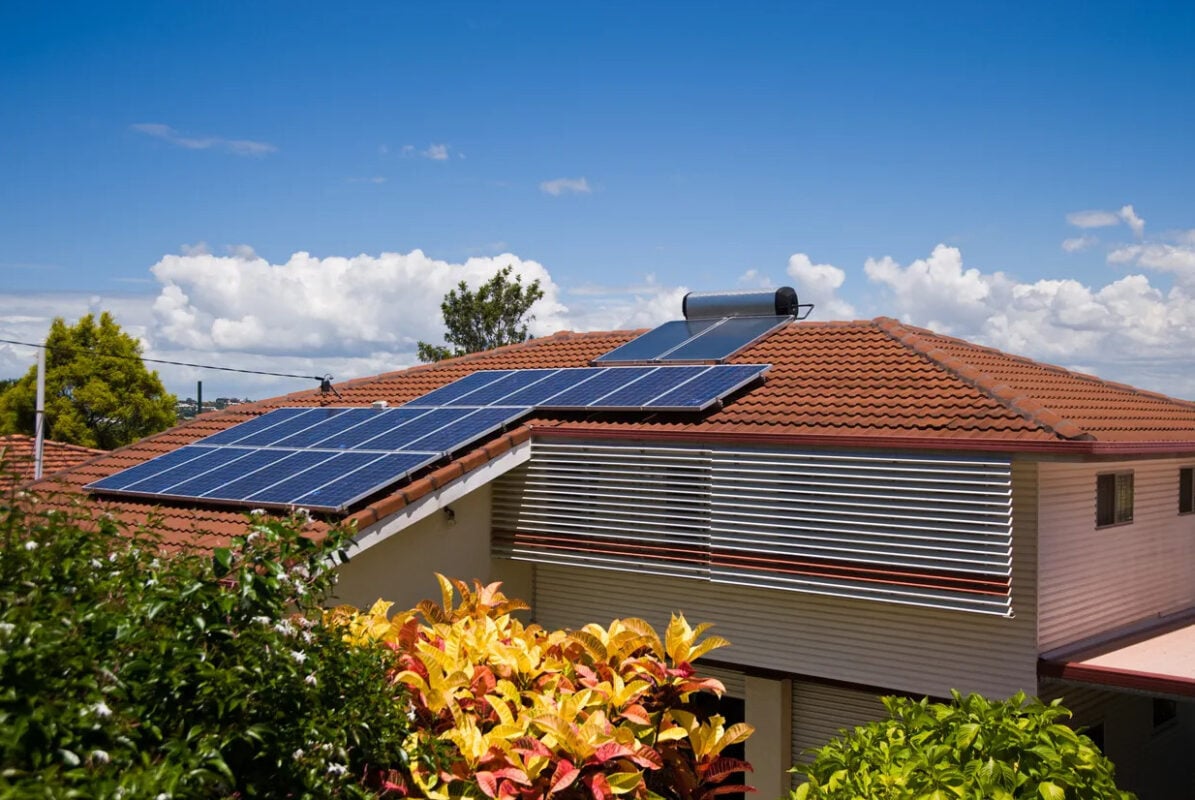Trump Cedes the Clean Energy Lead to China – Foreign Policy

Report on Shifting Global Dynamics in Clean Energy and Sustainable Development
1.0 Divergent National Policies and Implications for SDG 7 and SDG 13
A significant divergence in national energy policies between the United States and China presents critical implications for the global pursuit of Sustainable Development Goal 7 (Affordable and Clean Energy) and SDG 13 (Climate Action). Recent policy shifts within the U.S. administration indicate a deliberate move away from renewable energy sources, directly impeding progress toward these goals.
- United States Policy Reversal: The current U.S. administration has initiated policies aimed at dismantling the domestic wind and solar industries in favor of fossil fuels. Actions include the abrupt halt of projects like the Revolution Wind farm. This strategy, termed “American energy dominance,” prioritizes oil and natural gas production, reversing the previous administration’s climate-focused, transition-forward stance. This actively works against the targets of SDG 7 and SDG 13.
- China’s Dual Approach: While being the world’s largest carbon emitter, China has simultaneously executed a decades-long strategy of immense investment in renewable and clean energy technologies. This has positioned Beijing as the global leader in manufacturing the infrastructure necessary for achieving SDG 7 on a global scale.
2.0 China’s Market Dominance and Contribution to SDG 9
China’s strategic focus on clean technology has resulted in global market dominance, establishing it as a leader in Industry, Innovation, and Infrastructure (SDG 9) for the 21st-century energy sector. This lead is demonstrated by substantial control over key supply chains.
- Solar Technology: China commands over 80 percent of the global solar panel supply chain, having invested more than $50 billion in new photovoltaic capacity, ten times the investment of Europe.
- Wind Energy: As of 2023, China accounted for approximately 65 percent of global wind capacity, making it the central player in this component of the clean energy transition.
- Battery and EV Technology: Beijing produces over 75 percent of all batteries sold globally and has manufactured over 70 percent of all electric vehicle (EV) batteries. This industrial capacity is foundational for the global shift to sustainable transport and energy storage, key elements of SDG 9 and SDG 11 (Sustainable Cities and Communities).
Experts note that this technological and manufacturing gap is widening, potentially leaving the U.S. at a competitive disadvantage in what are considered “keystone industries” for future economic growth (SDG 8: Decent Work and Economic Growth).
3.0 Global Impact on Developing Nations and SDG 1
China’s industrial overproduction has led to the increased export of low-cost clean energy technologies, particularly to emerging markets. This dynamic is accelerating energy access in developing nations, directly contributing to SDG 1 (No Poverty) and SDG 7.
- Energy Access in Africa: In regions like Africa, where over 600 million people lack electricity access, imports of Chinese solar panels surged by 60 percent between mid-2024 and mid-2025. This provides a tangible pathway to alleviating energy poverty.
- Growth in Emerging Markets: Nations such as Pakistan are experiencing a “solar boom” fueled by affordable Chinese technology, enabling a faster transition to renewable sources to meet surging power demands. In 2024, emerging markets were the destination for 43 percent of China’s clean tech exports.
4.0 Geopolitical Tensions and Challenges to SDG 17
The divergent energy paths have created international friction, challenging the principles of SDG 17 (Partnerships for the Goals). While China’s exports facilitate energy transitions, they also spark economic backlash. Concurrently, the U.S. is using economic pressure to promote fossil fuels globally.
- Trade Disputes: Europe and Brazil have raised concerns over the influx of heavily subsidized Chinese EVs, leading to protective tariffs and anti-subsidy investigations to shield domestic industries.
- U.S. Promotion of Fossil Fuels: The U.S. administration is leveraging trade deals and the threat of tariffs to compel partners, including the European Union, to commit to large-scale purchases of U.S. oil and gas. This approach undermines global partnerships aimed at climate action and sustainable development.
5.0 Conclusion: Long-Term Risks to Sustainable Development
The United States’ withdrawal from leadership in the clean energy sector and its promotion of fossil fuels create a significant void in global efforts to achieve the Sustainable Development Goals. China is rapidly filling this gap, establishing an irreversible lead in the technologies foundational to future economic prosperity and environmental sustainability. This divergence risks isolating the U.S. from the primary technological and economic trends of the 21st century and complicates the coordinated international effort required to meet the targets of the 2030 Agenda for Sustainable Development.
Analysis of Sustainable Development Goals in the Article
1. Which SDGs are addressed or connected to the issues highlighted in the article?
The article discusses several issues related to energy policy, international relations, economic development, and climate change, which connect to multiple Sustainable Development Goals (SDGs). The primary SDGs addressed are:
- SDG 7: Affordable and Clean Energy: This is the central theme, focusing on the global shift towards renewable energy sources like wind and solar, and the contrasting policies of the U.S. and China.
- SDG 8: Decent Work and Economic Growth: The article frames the clean energy sector as “keystone industries that will be foundational for economic wealth,” linking technological leadership in this area directly to future economic growth and dominance.
- SDG 9: Industry, Innovation, and Infrastructure: The discussion revolves around manufacturing capacity, supply chains for solar panels and batteries, and the construction of energy infrastructure like wind farms. It highlights the race for innovation and industrial leadership in clean technologies.
- SDG 13: Climate Action: The entire context of transitioning from fossil fuels to renewable energy is driven by the need to address climate change. The article explicitly mentions “carbon emitter” and policies aimed at curbing greenhouse gas emissions.
- SDG 17: Partnerships for the Goals: The article details the competitive and cooperative aspects of the global energy transition, including international trade, exports of clean technology, tariffs, and pressure on other nations to adopt certain energy policies.
2. What specific targets under those SDGs can be identified based on the article’s content?
Based on the article’s discussion of energy policies, technological competition, and global trade, several specific SDG targets can be identified:
-
SDG 7: Affordable and Clean Energy
- Target 7.1: By 2030, ensure universal access to affordable, reliable and modern energy services.
- Explanation: The article directly addresses this by highlighting that in Africa, “more than 600 million people still need electricity access.” It then discusses how China’s solar exports are helping to meet this demand in energy-hungry emerging markets.
- Target 7.2: By 2030, increase substantially the share of renewable energy in the global energy mix.
- Explanation: This target is central to the article, which contrasts the U.S. administration’s move to “gut the U.S. wind and solar industry” with China’s strategy of “racing full-speed ahead” in renewables. The statistics on China’s dominance in solar and wind capacity directly relate to increasing the global share of renewable energy.
- Target 7.a: By 2030, enhance international cooperation to facilitate access to clean energy research and technology…and promote investment in energy infrastructure and clean energy technology.
- Explanation: The article discusses this target from a competitive standpoint. It notes that while many technologies were “invented here [in the United States],” China has poured “immense resources into manufacturing renewable and clean energy technologies,” now commanding the global market. This highlights the global race for technological supremacy rather than cooperation.
- Target 7.1: By 2030, ensure universal access to affordable, reliable and modern energy services.
-
SDG 8: Decent Work and Economic Growth
- Target 8.2: Achieve higher levels of economic productivity through diversification, technological upgrading and innovation, including through a focus on high-value added and labour-intensive sectors.
- Explanation: The article describes clean energy industries as “keystone industries that will be foundational for economic wealth of countries around the world.” China’s massive investment and manufacturing scale-up in solar, wind, and batteries are presented as a strategy to achieve economic productivity and dominance in high-value, cutting-edge sectors.
- Target 8.2: Achieve higher levels of economic productivity through diversification, technological upgrading and innovation, including through a focus on high-value added and labour-intensive sectors.
-
SDG 9: Industry, Innovation, and Infrastructure
- Target 9.4: By 2030, upgrade infrastructure and retrofit industries to make them sustainable, with all countries taking action in accordance with their respective capabilities.
- Explanation: The article mentions specific infrastructure projects like the “Revolution Wind—a nearly completed giant wind farm.” It also discusses the vast industrial infrastructure China has built, such as “electric vehicle and battery factories in Brazil, Hungary, Indonesia,” which are central to a sustainable industrial transition.
- Target 9.4: By 2030, upgrade infrastructure and retrofit industries to make them sustainable, with all countries taking action in accordance with their respective capabilities.
-
SDG 13: Climate Action
- Target 13.2: Integrate climate change measures into national policies, strategies and planning.
- Explanation: The article directly contrasts the national policies of two major global powers. It states, “The Biden administration put climate at the center of its energy policy,” while the “Trump administration is largely running the playbook in reverse” by embracing fossil fuels and vowing to “retaliate against any countries that backed a global agreement to curb greenhouse gas emissions.”
- Target 13.2: Integrate climate change measures into national policies, strategies and planning.
-
SDG 17: Partnerships for the Goals
- Target 17.7: Promote the development, transfer, dissemination and diffusion of environmentally sound technologies to developing countries on favourable terms.
- Explanation: The article provides clear examples of this, noting that China has “scaled up its global exports of batteries, solar panels, and other clean energy technologies” to “energy-hungry emerging market economies.” It cites Pakistan’s “solar boom” and the surge in African imports of Chinese solar panels as direct evidence of this technology diffusion.
- Target 17.7: Promote the development, transfer, dissemination and diffusion of environmentally sound technologies to developing countries on favourable terms.
3. Are there any indicators mentioned or implied in the article that can be used to measure progress towards the identified targets?
Yes, the article provides several quantitative and qualitative indicators that can be used to measure progress or lack thereof towards the identified targets.
- For Target 7.1 (Universal Energy Access):
- Indicator: The number of people without electricity access. The article explicitly states, “more than 600 million people [in Africa] still need electricity access.”
- For Target 7.2 (Share of Renewable Energy):
- Indicator: Market share and capacity of renewable technologies. The article provides specific data points:
- “China commands more than 80 percent of global solar panel supply chains.”
- “In 2023, China accounted for some 65 percent of global wind capacity.”
- “China produces more than three-quarters of batteries sold globally.”
- Indicator: Market share and capacity of renewable technologies. The article provides specific data points:
- For Target 7.a (Investment in Clean Energy):
- Indicator: Financial investment in renewable energy capacity. The article mentions China has “invested more than $50 billion in new photovoltaic supply capacity.”
- For Target 17.7 (Technology Transfer to Developing Countries):
- Indicator: Volume and growth of clean technology exports to developing nations. The article notes:
- “In 2024, emerging markets were the destination of 43 percent of China’s clean tech exports, nearly double their market share in 2022.”
- “In 2024, [Pakistan] more than doubled its solar panel imports from Beijing in just one year.”
- “Between July 2024 and July 2025, African imports of Chinese solar panels surged by 60 percent.”
- Indicator: Volume and growth of clean technology exports to developing nations. The article notes:
4. Summary Table of SDGs, Targets, and Indicators
| SDGs | Targets | Indicators Identified in the Article |
|---|---|---|
| SDG 7: Affordable and Clean Energy |
7.1: Ensure universal access to affordable, reliable and modern energy services.
7.2: Increase substantially the share of renewable energy in the global energy mix. 7.a: Promote investment in energy infrastructure and clean energy technology. |
– “more than 600 million people [in Africa] still need electricity access.”
– China’s command of “more than 80 percent of global solar panel supply chains” and “65 percent of global wind capacity.” – China’s investment of “more than $50 billion in new photovoltaic supply capacity.” |
| SDG 8: Decent Work and Economic Growth | 8.2: Achieve higher levels of economic productivity through technological upgrading and innovation. | – Clean energy is described as “keystone industries that will be foundational for economic wealth.” |
| SDG 9: Industry, Innovation, and Infrastructure | 9.4: Upgrade infrastructure and retrofit industries to make them sustainable. | – Construction of the “Revolution Wind” farm and Chinese-built “electric vehicle and battery factories” abroad. |
| SDG 13: Climate Action | 13.2: Integrate climate change measures into national policies, strategies and planning. | – Contrasting national policies: U.S. administration “running the playbook in reverse” vs. previous administration that “put climate at the center of its energy policy.” |
| SDG 17: Partnerships for the Goals | 17.7: Promote the development, transfer, and diffusion of environmentally sound technologies to developing countries. |
– “In 2024, emerging markets were the destination of 43 percent of China’s clean tech exports.” – “African imports of Chinese solar panels surged by 60 percent.” – Pakistan “more than doubled its solar panel imports from Beijing in just one year.” |
Source: foreignpolicy.com

What is Your Reaction?
 Like
0
Like
0
 Dislike
0
Dislike
0
 Love
0
Love
0
 Funny
0
Funny
0
 Angry
0
Angry
0
 Sad
0
Sad
0
 Wow
0
Wow
0



















































.jpg.webp?itok=0ZsAnae9#)

























